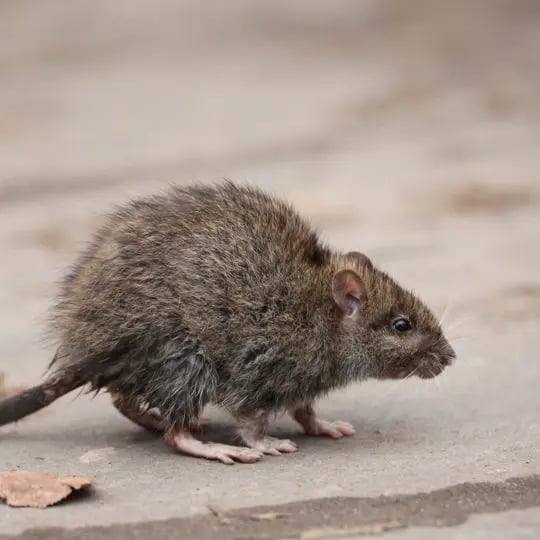
Scientific Name: Rattus norvegicus
Lifespan: 1 to 3 years
Problem: Property damage, disease, smell, and grossness
Norway rats (Rattus norvegicus) are an extremely common type of rat. You may also know them as brown rats, street rats, sewer rats or wharf rats, as they have historically inhabited well-populated human environments in large numbers. Today, rats may be found anywhere humans are found, but are and considered one of the more common pests.
The Norway Rat Life Cycle
- Babies – Female Norway rats produce about 5 litters a year, with 2-14 rat pups per litter. The pups are small, pink and hairless, and remain in the nest. Nests are usually made from leaves, garbage, and any other materials the rat can find, and located near the ground.
- Juveniles – Rats remain juveniles for 5 weeks before reaching sexual maturity. During this time, they can move about on their own and may engage in tunneling.
- Mature Animals – A full-grown Norway rat can reach up to 25 cm long. They are some of the largest known rats, and are grayish brown in color.
Norway Rat Habitats and Habits
Like other rodents, Norway rats are attracted to the plentiful food and housing provided by environments heavily populated by humans. Being omnivores, they are able to find food in just about every type of habitat. Norway rats are also excellent swimmers, and thrive near water, as it provides a convenient escape from predators and pursuers.
These rats will also escape from predators and humans via burrowing. Young rats will create underground burrows that function as escape tunnels, allowing them to vanish quickly and efficiently. Rats often live in walls, attics, and rooftops, and it’s possible to have a rat infestation without ever seeing a rat.
How to Recognize and Get Rid of a Norway Rat Infestation
Along with being potential carriers of various unpleasant diseases, rats can cause significant amounts of damage to human homes. The following types of damage are signs that you may be facing a Norway rat infestation:
- Droppings 2 cm long near food sources or nesting areas
- Escape holes in yard leading into underground burrows
- Gnawing and squeaking noises, especially at night
- Smears on the walls from the grease in their fur
- A musty smell
Norway rat infestations can be controlled via various rat traps and rat poisons, but also by sealing any holes that might serve as entry points to your house and by limiting the amount of scrap foods available for their consumption.
Need Help with Norway Rats - Green Pest Solutions?
Call today at and let's talk about how we can help you with Norway Rats - Green Pest Solutions and other Pest Library.